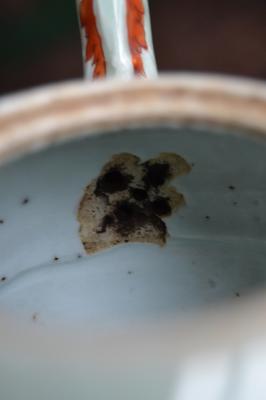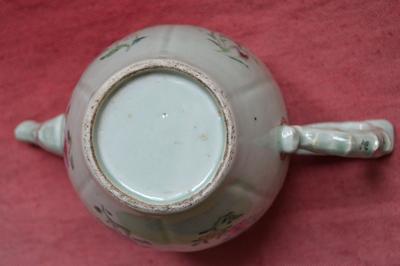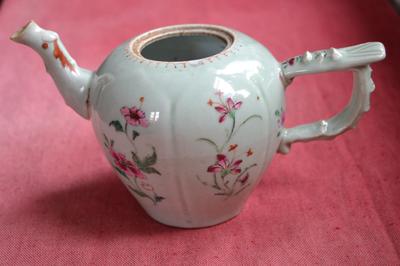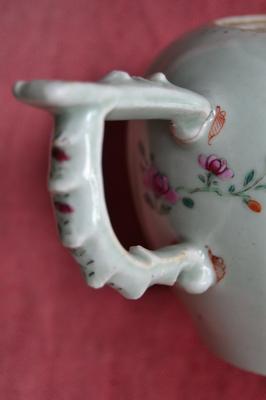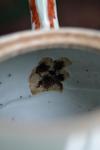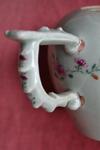Commenting is deactivated.
Please post all new topics and queries to the
Discussion Forum
Celadon teapot with famille rose
by Graaberg
(Stockholm, Sweden)
I'm puzzled by this teapot in rococo style regarding it's age.
The body appears to be joined by an upper and a lower half (sphere)
(this I find very strange).
The inside straining holes at the spout are coarsly done.
The handle is noticeably leaning to one side.
It's a six-sided melon form in celadon glaze with flowers in famille rose and delicate decor in gold an finely painted red lines here and there and around the mouth.
The lid is missing.
It's a charity shop bargain so I don't expect anything really, but here in Sweden you can actually find 18'th century Chinese porcelain (at rare occasions) in places like that.
Much obliged
Sincerely
Mr Ulf Graaberg, Stockholm, Sweden
